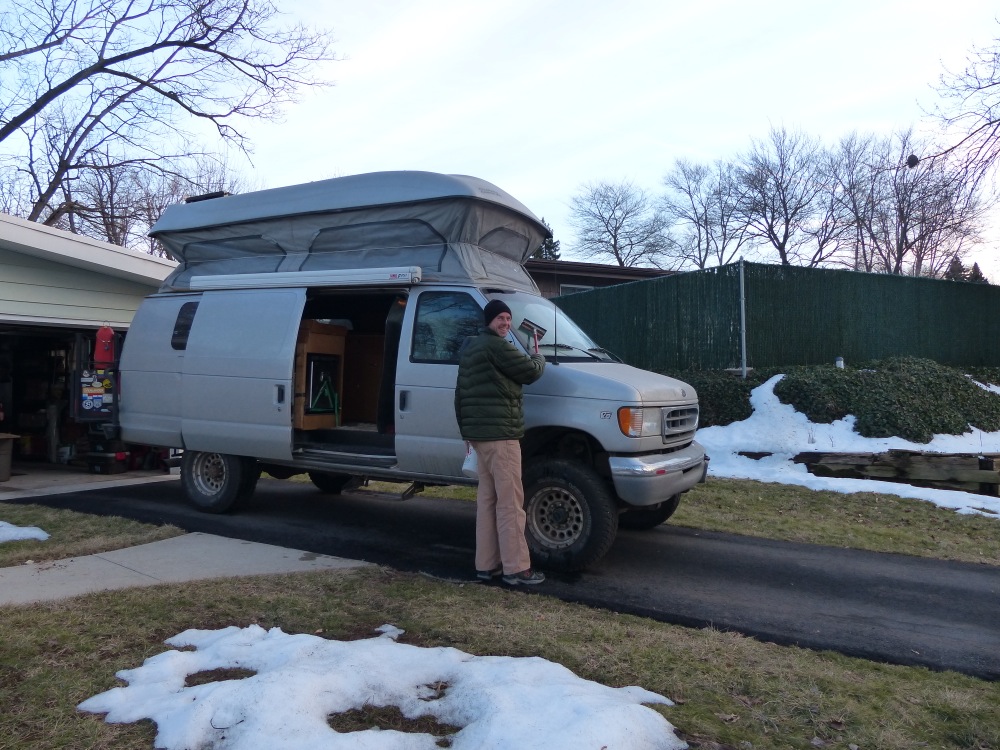Although I can’t take the headaches out of the experience, here’s how we went about shipping the Sparksmobile back to the US from South America.
We found a great deal on airfare back to the states from Santiago, so it would have made sense to ship from Chile to the West Coast of the US. We investigated that, but we couldn’t find any roll-on/roll-off (RoRo) vessels doing that route. Most everyone we talked to shipped out of either Montevideo, Uruguay, (to Europe) or Buenos Aires, Argentina (to North America).
We contacted Martin Flores (operaciones AT capri-arg DOT com.ar) with K-Line and German Weber (gweber AT webersi DOT com.ar) and requested quotes. For our situation, Martin’s quote was much less expensive.
K-Line doesn’t post their schedule much more than 4-6 weeks in advance, so we didn’t get a ship date until we were just a month away from when we wanted to be on a boat. K-Line updates their schedules about once a week.
Our shipping charges amounted to about $2300 including port charges on both ends and a $200 destination change fee that most people won’t need.
Dropping our car off at the port of Zarate (near Buenos Aires) was fairly straightforward, and took about 3 hours. Here’s a complete write-up of the process that we received from Toby Conroy of Carpe Viam:
The company we shipped with was K-Line. It is a company out of the states. It has a different name in Argentina. The name in Argentina is Capricorn. We contacted Martin Flores, his email is: [email protected]. He is not an agent so you do not pay him a fee and you do all the work yourself but it is easy. All you have to do is contact him and send him all your paperwork and then he will tell you when to drop your car off at the port. Here is our write up for the port in Zarate, Argentina:
1. Drive past the port entry to the “caja” to pay the port fees. The GPS coords for the caja are: S34* 04′ 07.1″ W59* 02′ 48.0″
2. Right before the caja, there is a parking lot on the right. Park there and walk towards the coordinates. Ask for the caja if you don’t see it. You will not have any documents from Martin at this point, I would suggest emailing him the night before you go to ensure that he sent them over because he did not in our case. When you get there and they finally find your info, they will tell you how much to pay. We paid 1960 pesos. They only accept pesos, no credit cards. If you need wifi, there is a spot in front of the modular building outside of the caja. We used it to call Martin when they couldn’t find our documents.
3. Next, drive back to the port entry and park on the right hand side, wherever you can fit before the toll booth thing. GPS coords for port entry are: S34* 04′ 30.8″ W59* 02′ 05.2″
4. Go to the window of the building on the right hand side. You will need your passports. Here, they give you a temporary ID to enter the port. You both need them if you are both going into the port. Go back to your car and drive up to the toll booth. Hand them your temporary ID and the receipt for the port fees you just paid.
5. Drive straight until you reach another booth and park on the left hand side before the entrance to the parking lot/booth. This is aduana. The coordinates are: S34* 04′ 07.1″ W59* 02′ 05.2″ Go into the building and cancel your import permit. We didn’t get proof that they cancelled it, although we asked. They scribbled down in pencil on our import permit which port the truck was going to and the boat to load it on. Then they took the keys. It happens very fast! But they let us take a quick pic and say our goodbyes Then, they call a taxi for you and give you a ride to the entrance to the port where you wait for your taxi.
Our van was loaded onto the Bangkok Highway on November 23 and we were supposed to pick it up in Jacksonville, Florida, on about January 5. The vessel ended out having mechanical troubles, and after a two-week vacation in the Mexican port of Veracruz, our van finally arrived in Baltimore on February 1 aboard a different ship.
The process for picking up the car is a little strange, because unless you’re authorized by the Transportation Security Administration you’re not allowed into a US port. That means you need to engage the services of an escort who is authorized (by means of something called a TWIC card). We hired Kurt Mueller for the task, who can be contacted through his wife Heide at [email protected]. Kurt charges a $175 flat fee for his services. He will pick you up anywhere in the Baltimore area, drive you to the port, and retrieve your vehicle for you. (Thanks to Melanie Cahill and Justin Smith of Lost in the Americas for referring Kurt to us!)
Kurt had called the appropriate port personnel the day before I was to go to Baltimore and was told that the van was ready to pick up. When we arrived at the port however, Kurt was told that we still needed to get customs clearance. For some inexplicable reason, despite the fact that there is a customs office on the port we had to go to the customs office at the Baltimore-Washington International Airport to do this. This cost a few hours, but I was still able to get the Sparksmobile back by mid-afternoon.
The van arrived undamaged, with only the little convex stick-on mirrors stripped off, just as they were when we shipped from Panama to Colombia. I think if I were to ship a vehicle again, I’d buy a set of brand new convex mirrors and leave them on the dashboard for whoever wants them.


